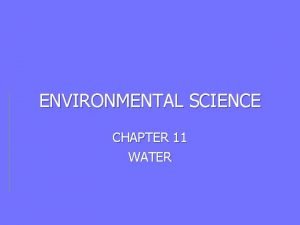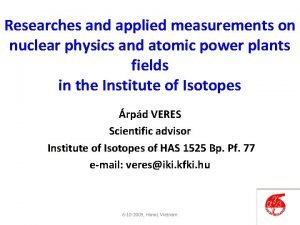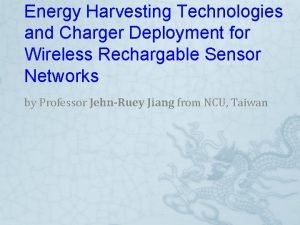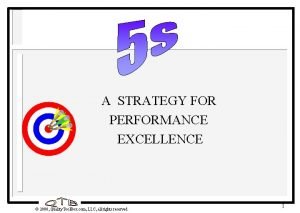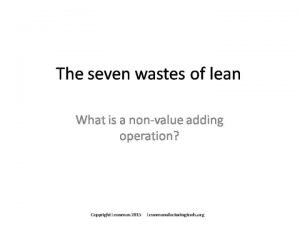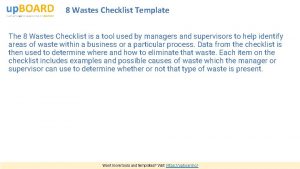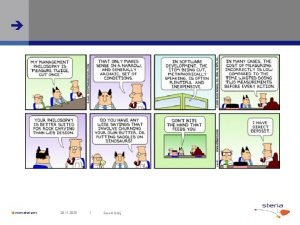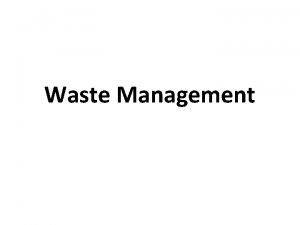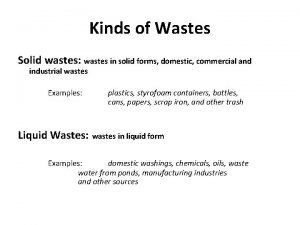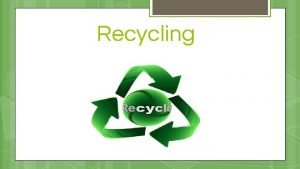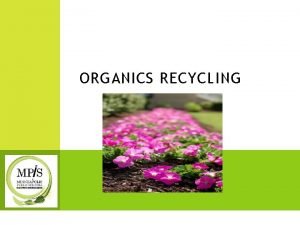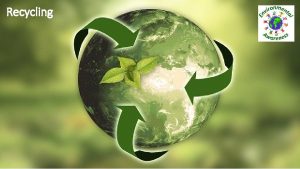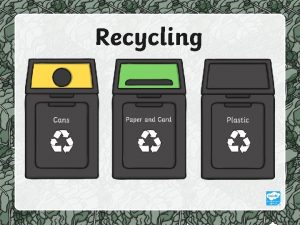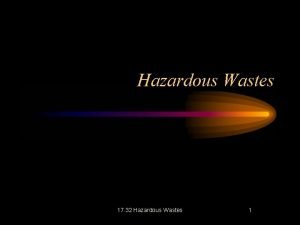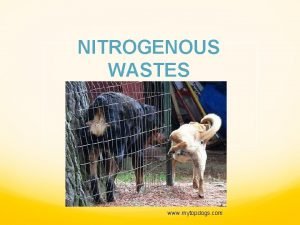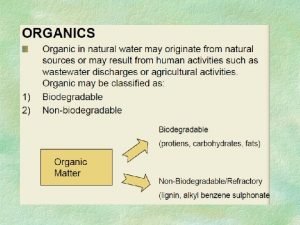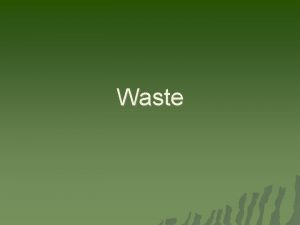MINIMISE POLLUTING WASTES FOR SAFE RECYCLING Mrs Almitra












- Slides: 12

MINIMISE POLLUTING WASTES FOR SAFE RECYCLING Mrs Almitra H Patel, Member Supreme Court Committee for Solid Waste Management almitrapatel@rediffmail. com www. almitrapatel. com

COMMON POLLUTANTS • Mercury in tube-lights and fluorescents • Lead in paints, also cadmium, mercury • Short-life PVC : burning dioxins • Thermocole: bulky, hard to recycle • Plastic bin-liners for food wastes • High phosphate in detergents : promotes growth of algae and water weeds which choke lakes, ponds and rivers 2

MERCURY IN TUBELIGHTS 20 – 40 mg mercury in 1 tubelight = 4000 times daily safe exposure limit for humans. It is released within 8 hrs of wastepickers breaking off aluminium caps on footpaths. In EU and USA, fluorescents with over 5 mg mercury must go to Hazardous Waste landfills, not with municipal waste. 3

PROBLEMS OF TUBELIGHTS In India, Haz-Waste Rules apply only over 50 mg mercury content. Fluorescents ARE E-waste but not covered in India’s new e-Waste Rules. Tubelights in city waste also puncture expensive tyres of garbage trucks & JCBs. Responsible collection and recycling is a COST, as glass price is v low & recyclers very far away. 4

SOLUTIONS for TUBELIGHTS Low-mercury tubelights are now imported. Lower the duties on these, tax high-Hg more. Create enough low-Hg demand within India : *Govt, Rly, defence, PSUs to buy only low-Hg *Give Consents only if low-Hg lighting used *Incentivise take-back and safe recycling *Enforce mercury-content labelling, for choice 5

DANGERS OF LEAD IN ENV. Lead in the environment lowers the IQ of children and affects the health of all. So Lead was removed from petrol, but not from paints for decorative & commercial use. Public is unaware of heavy-metal content in paints / toys they buy, & their risks to kids. 6

SOLUTIONS for PAINTS Global limits for lead in paint are 600 ppm, in USA 90 ppm. India’s 1000 ppm BIS is VOLUNTARY : NO COMPLIANCE. 2010 tests show upto 126, 600 ppm in India ! MNC paint Co. s make low-lead paints of same shades abroad, but sell high-lead paints to us. WHY ? ? ? It costs only 10% more to make safe paints with 600 ppm lead content, so BIS Std shd be MANDATORY. Mandatory Lead-content Labelling of paints & toys will allow the public to choose safe products. 7

SOLUTIONS for PVC Dioxin forms when PVC is burnt, as most Indian waste is, on street-corners or dumps. This “poison plastic” is 40% chlorine Has been phased out in many cities, companies and even countries. India needs Rules under EP Act to phase out PVC from use-and-throw packaging and short-life items like stationery, toys and footwear. 8

SOLUTIONS for BIN LINERS MSW Rules require food wastes to be free of plastics so they can be composted. Dry-wet segregation is defeated if plastic bags are used for lining garbage bins. Fully-compostable plastic bags (ISO 17088) are available in India. All bin-liners SOLD should be compulsorily of such plastic. 9

SOLUTIONS for NON-RECYCLED NUISANCE POLYMERS EPS = Expanded Polystyrene / Styrofoam / Thermocole, has more bad points than good. Its wide use creates huge volumes of bulky waste unwanted by waste-pickers, though it is technically recyclable, even into fuel oil. Instead, use easily-recycled packaging like folded-cardboard, papier-mache (e. g. eggtrays), bubble-wrap, soluble foam-pellets. . . 10

SOLUTIONS for HIGHPHOSPHATE DETERGENTS Since 1960 s, high phosphate detergents cause heavy growth of algae & waterweeds. Dying, they sink, remove oxygen from water. So fish cannot survive this ‘eutrophication’. Lake Erie was saved by limiting phosphorus in US and Canada detergents to 8. 7% in 1970 and 2. 2% in 1973. 11

IT IS EASY TO MAKE LOWPHOSPHORUS DETERGENTS 80% detergents in India are produced by MNC controlled firms who know how to make them low-phos. They do this in N America & Europe WHERE LAWS REQUIRE THIS, but not in India and Africa etc without such sensible laws. India needs Mandatory Labelling of phosphorus content for informed choice, plus Mandatory Upper Limits for huge savings to tax-payers in annual cost of weed-removal from water bodies. 12
 Safe feed safe food
Safe feed safe food Safe people safe places
Safe people safe places They are mrs garcia and mrs castro
They are mrs garcia and mrs castro Mrs. darling was ___________ of mrs. s.
Mrs. darling was ___________ of mrs. s. They are mrs garcia and mrs castro
They are mrs garcia and mrs castro Is water that contains waste from homes or industry
Is water that contains waste from homes or industry Iaea
Iaea Wireless charging wastes energy
Wireless charging wastes energy 9 wastes
9 wastes Seven wastes of lean
Seven wastes of lean 8 wastes examples
8 wastes examples Seven wastes lean
Seven wastes lean Effects of solid waste
Effects of solid waste





